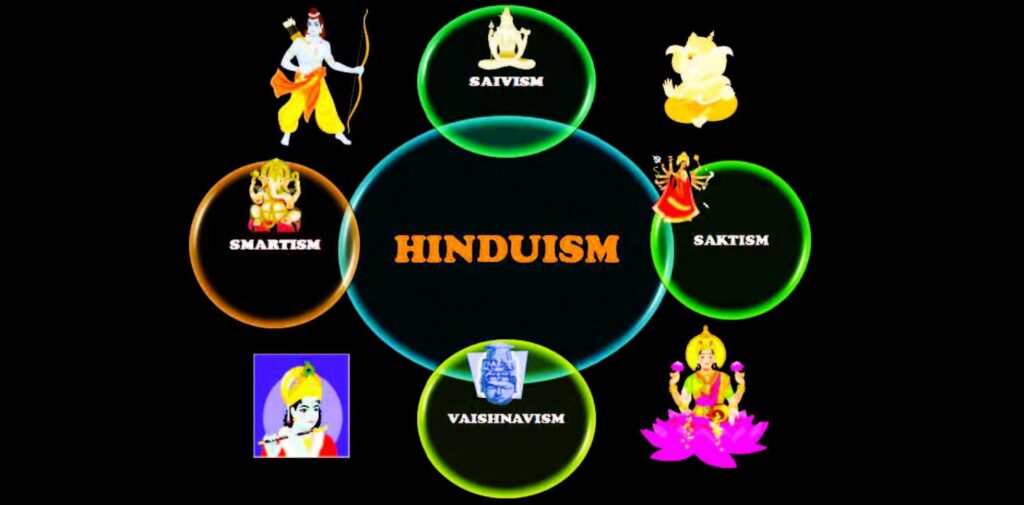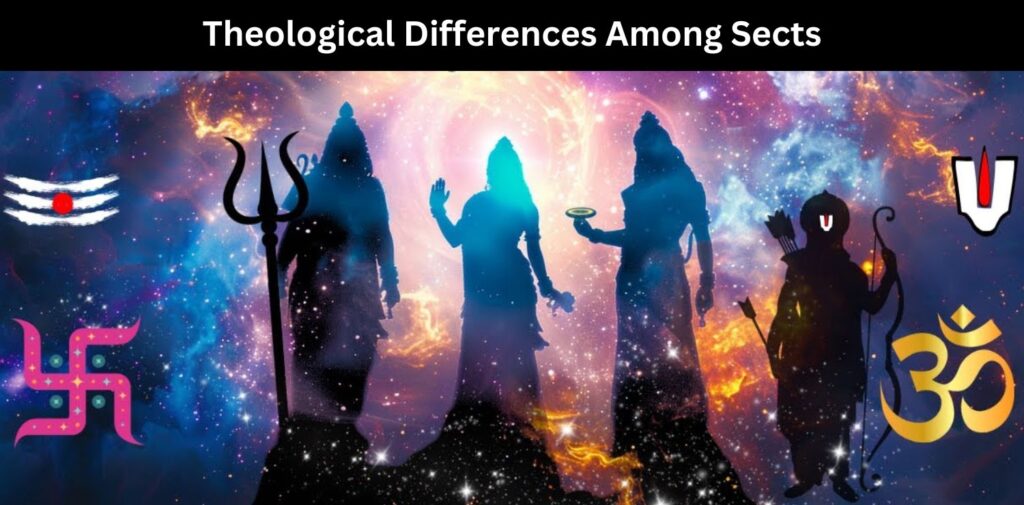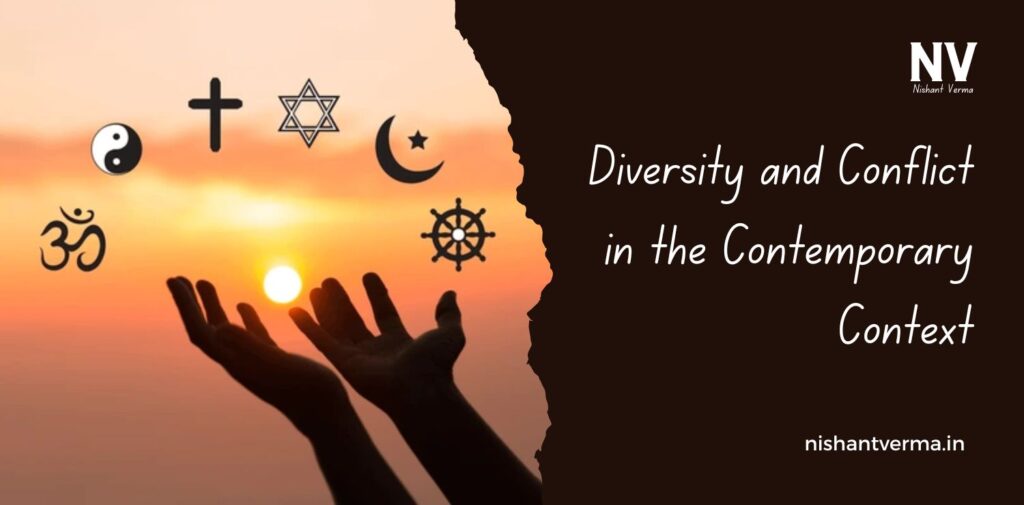Hinduism, one of the oldest religions in the world, is known for its rich diversity. Unlike many other religions, Hinduism doesn’t have a single unified system of beliefs or practices. Instead, it is made up of various sects, each with its own set of beliefs, rituals, and interpretations of sacred texts. These sects, while sharing some common principles, often differ significantly in their views on theology, philosophy, and the ways to worship the divine.
What are Sects in Hinduism?
In the context of Hinduism, a sect refers to a specific group or community that follows a particular interpretation of the religion. These sects may be based on the worship of a particular deity, a philosophical school of thought, or a specific set of rituals. Over the centuries, several sects have evolved, each adding to the diverse tapestry of Hindu religious practice.
The major sects within Hinduism are primarily divided based on the worship of particular deities or philosophies. For example, some sects focus on the worship of Lord Vishnu, others on Lord Shiva, and some on the worship of Goddess Durga or Kali. There are also groups that focus on different philosophies, such as Vedanta, Yoga, or Bhakti.

Major Sects in Hinduism
Hinduism is often divided into four major sects, each with its own specific beliefs and practices:
- Vaishnavism: This sect is centered around the worship of Lord Vishnu and his avatars, particularly Krishna and Rama. Vaishnavas believe that Vishnu is the Supreme God, the ultimate source of creation and preservation. The Bhakti movement, which emphasizes love and devotion to God, is a key part of Vaishnavism.
- Shaivism: Shaivism focuses on the worship of Lord Shiva, the destroyer and transformer in the Hindu trinity (Trimurti). Shaivites believe that Shiva is both immanent and transcendent, and that he is the source of both destruction and creation in the universe.
- Shaktism: Shaktism centers around the worship of the Goddess (Devi), particularly in her forms as Durga, Kali, or Parvati. Shaktas believe that the divine feminine energy is the source of all creation and power.
- Smartism: Smartism is a more inclusive sect that allows the worship of various deities, including Vishnu, Shiva, Devi, and others. Smartas follow the teachings of the Upanishads and focus on philosophical inquiry and meditation. They also emphasize the importance of personal experience in understanding the divine.
These four sects, though distinct, often share common philosophical concepts such as karma (the law of cause and effect), moksha (liberation from the cycle of birth and rebirth), and dharma (righteous duty).

Theological Differences Among Sects
The main differences among these sects lie in their beliefs about the nature of the divine and how to achieve spiritual liberation. For example:
- Vaishnavism: Vaishnavas believe that God is personal and can be approached through love and devotion. They believe in a close, intimate relationship between the devotee and the deity, and their practices include chanting, prayer, and rituals to honor Vishnu.
- Shaivism: Shaivites, on the other hand, emphasize the importance of self-realization and meditation. They believe that Shiva is both formless and manifest, and through meditation and ascetic practices, one can experience Shiva’s presence in all things.
- Shaktism: Shaktism is unique in its focus on the divine feminine energy. Shaktas believe that the Goddess is the ultimate source of all creation and is more powerful than any male deity. Worship in Shaktism involves rituals, mantras, and sometimes, intense practices like tantra.
- Smartism: Smartas are often more philosophical in their approach. They do not emphasize a personal relationship with a particular deity as much as other sects but instead believe in the ultimate oneness of all things. They may worship several deities, but the focus is on meditation, self-inquiry, and realization of the true nature of the self (Atman) and the universe (Brahman).
Sects and Social Identity
In India, the sect one belongs to often shapes one’s social and cultural identity. Each sect has its own temples, rituals, festivals, and social practices. For example, Vaishnavas may gather at temples dedicated to Lord Vishnu or Krishna, while Shaivites might visit Shiva temples.
In rural areas, people may adhere strictly to the traditions of their sect, and their social life is often intertwined with the religious practices of their group. Sects can also influence marriage practices, dietary restrictions, and the roles individuals play in society.
Diversity Within Hinduism: A Blessing or a Curse?
While the diversity within Hinduism is a source of strength and richness, it can also lead to conflict. Throughout history, there have been instances where different sects have clashed over differences in theology and practice. For example, in medieval India, the conflict between Shaivites and Vaishnavites sometimes led to violent confrontations.
In the contemporary context, conflicts between sects are less common, but there are still tensions. Some sects accuse others of being “heretical” or straying from the true path, leading to criticism and hostility. At the same time, Hinduism’s diversity allows for a wide range of interpretations and practices, which is part of what makes the religion so adaptable and appealing to different cultures and communities.

Hinduism in the Modern World: Sectarian Tensions and Unity
In today’s globalized world, the differences between Hindu sects are still present, but many modern thinkers and spiritual leaders emphasize unity. The focus is on the common values shared by all Hindus, such as respect for the divine, the importance of dharma, and the pursuit of moksha.
The rise of new religious movements within Hinduism, such as the International Society for Krishna Consciousness (ISKCON), has also contributed to the global spread of Hindu teachings. These movements often try to bridge the gap between different sects and promote a more inclusive approach to Hinduism.
Moreover, many Hindus today are focused on the practical aspects of their faith, such as charitable work, environmental conservation, and community service. This emphasis on shared action helps create a sense of unity despite the theological differences between sects.
Conclusion: Embracing Diversity Within Hinduism
The diversity of sects within Hinduism is both a source of strength and a challenge. On one hand, it provides a rich array of spiritual paths, allowing individuals to choose the approach that best suits their personality, needs, and understanding of the divine. On the other hand, it sometimes leads to misunderstandings, conflicts, and tensions between different groups.
In the contemporary world, the emphasis is gradually shifting from doctrinal differences to common values, with many Hindus choosing to focus on the shared goals of spiritual growth, ethical living, and the pursuit of liberation. Despite the diversity of beliefs and practices, at its core, Hinduism teaches the unity of all life and the interconnectedness of all beings, encouraging a spirit of respect, tolerance, and understanding. In this way, the various sects within Hinduism, rather than being a source of division, can be seen as a testament to the religion’s inclusivity and adaptability.
By embracing this diversity, Hinduism can continue to thrive and inspire people across the world, offering a path to spiritual fulfillment for all.




